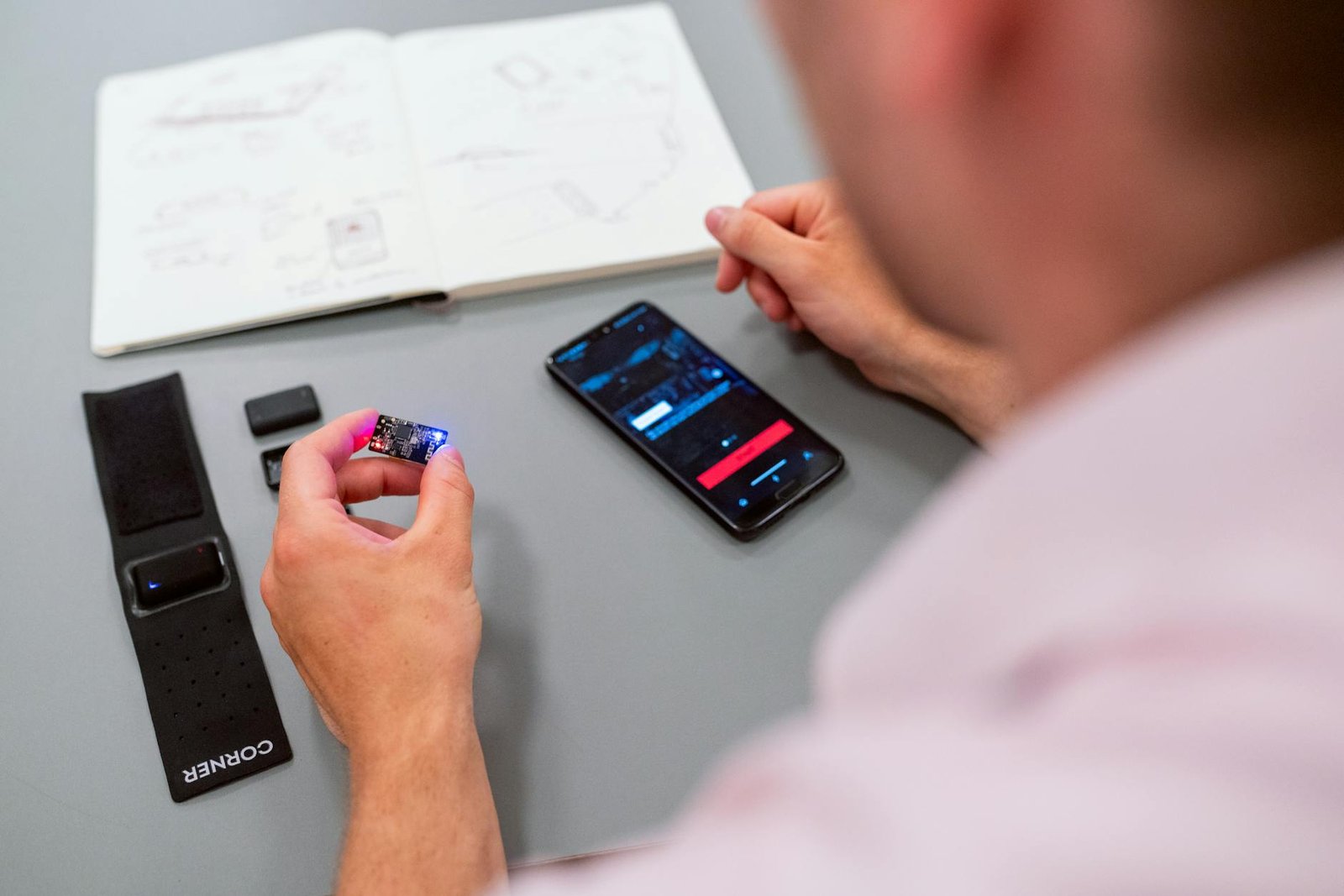SHARE

Unlock Your Ideas: How to Develop an App from Concept to Launch!

Apps are essential tools that enhance our lives, streamline businesses, and connect communities. Whether you have a groundbreaking idea or a simple solution to a common problem, understanding how to develop an app can be a rewarding journey. However, turning your concept into a fully functioning application involves careful planning, development, and execution.
Collaborating with professionals who offer mobile app design services can significantly elevate your app’s user experience. In this post, we’ll take you through the entire app development process—from the initial idea to the launch—highlighting essential steps and unique insights to help you succeed.
Table of Contents

Step 1: Ideation and Market Research
Identify Your Idea
The first step in app development is brainstorming and refining your idea. What problem does your app solve? Who is your target audience? Your concept should ideally address a specific need, making life easier for users or providing them with a valuable service. Spend time writing down your thoughts, conducting brainstorming sessions, or discussing your ideas with friends or potential users.
Conduct Market Research
Once you have a basic idea, it’s important to validate it. Conduct market research to get a clearer picture of similar apps. Here are some effective methods:
- Competitor Analysis: Look at existing apps that fulfil a similar role. Identify what they do well and where they can improve. User reviews help us understand what people like or dislike about these apps.
- Surveys and Interviews: Connect with your target audience by conducting surveys or interviews. This will help you gain insights into their challenges, preferences, and the methods they currently use to address the problem your app aims to solve.
- Trends Analysis: Keep an eye on the latest trends in app development. For example, integrating artificial intelligence (AI) and machine learning (ML) into apps is becoming increasingly popular and can improve user experience.
Step 2: Define Your App’s Features
After validating your idea, it’s time to define the core features of your app. Focus on the essentials that will provide value to users without overwhelming them. Here are some trending features to consider:
- Personalization: Users value experiences that are tailored to their preferences. Consider adding features that let them customize settings, receive personalized content, or get relevant notifications to their interests.
- AI Integration: Incorporating artificial intelligence can improve your app by providing smart recommendations, utilizing chatbots for customer support, and using predictive analytics to enhance user engagement.
- Social Sharing: Inspire users to share their experiences or content from your app on social media platforms. This can greatly improve your app’s visibility and expand its reach.
- Offline Capabilities: Ensure that your app functions without an internet connection. This is especially important for users in areas with poor connectivity.
- Security Features: With growing concerns about data privacy, integrating robust security measures is essential. Consider features like two-factor authentication and end-to-end encryption.
Step 3: Create a Wireframe
After defining your app’s features, the next step is to create a wireframe. A wireframe serves as a visual blueprint for your app, helping you see its structure and flow without focusing on design elements.
- User Flow: Outline how users will move through the app. Identify essential screens and clarify how users will engage with different features.
- Feedback: Share the wireframe with potential users to gather feedback. This can help identify navigation issues or missing features before building the app.
Step 4: Choose the Right Development Approach
When it comes to app development, you have several options to consider:
- Native Apps: These applications are developed exclusively for a specific platform, like iOS or Android. Because they’re tailor-made, they deliver the best performance and a seamless user experience. However, building separate native apps for each platform can be expensive and time-consuming.
- Cross-Platform Apps: These applications are built to function on multiple platforms using a single codebase. React Native and Flutter enable developers to create high-quality apps that work effectively on iOS and Android.
- Progressive Web Apps (PWAs): PWAs blend the advantages of web and mobile apps. They are accessible via web browsers and provide features like offline access and push notifications, much like native apps.
Choosing the right development method depends on your audience, budget, and features. If you want to quickly reach more users, a cross-platform app is a great option.
Step 5: Development and Testing
Development Phase
During this phase, your development team will start coding the app. It’s essential to have a structured approach:
- Agile Development: Use Agile methods that emphasize building in small steps and getting regular feedback. This approach helps you adapt quickly to changes and makes sure the final product meets user needs effectively.
- Regular Updates: Keep your stakeholders updated on the development progress. Regular communication helps identify any issues early on.
Testing Phase
Testing is a vital part of app development that must not be ignored. It helps find and resolve issues before the app goes live.
- Types of Testing:
- Unit Testing: This focuses on testing individual parts of the app to make sure they work correctly.
- Integration Testing: Checks if different modules work together seamlessly.
- User Acceptance Testing (UAT): Real users test the app in practical situations to provide valuable feedback.
- Automated vs. Manual Testing: Automated testing can be time-efficient, especially for repetitive tasks. However, manual testing is crucial for understanding user interactions and ensuring a seamless experience.
Step 6: Prepare for Launch
Create a Marketing Plan
As you approach the launch date, it’s crucial to create a marketing plan. Consider the following strategies:
- Social Media Campaigns: Use Instagram, Twitter, and Facebook to generate buzz for your app with sneak peeks, behind-the-scenes content, and user reviews.
- Influencer Partnerships: Partner with influencers who connect well with your target audience. Their support can greatly enhance your app’s visibility and reach.
- App Store Optimization (ASO): Improve your app’s title, description, and keywords to boost its presence in app stores. A solid ASO strategy can lead to increased organic downloads.
Launch Day
On launch day, ensure that everything is in place:
- Monitor Performance: Utilize analytics tools to track downloads, user engagement, and feedback. This information is crucial for identifying areas for improvement.
- Engage with Users: Respond to user feedback promptly. Positive engagement can encourage users to spread the word about your app.
Step 7: Post-Launch Activities
Launching your app is just the beginning. Continuous improvement is key to retaining users and ensuring long-term success.
Gather User Feedback
Post-launch, focus on gathering feedback from users to identify areas for improvement. Consider:
- In-App Surveys: Implement surveys within the app to understand user satisfaction and areas needing enhancement.
- App Reviews: Keep an eye on app store feedback and respond thoughtfully. Engaging with users demonstrates that you appreciate their input and are dedicated to enhancing their experience.
Regular Updates
Keep your app up-to-date by regularly releasing updates. This can include new features, bug fixes, or performance improvements. Frequent updates show users that you care about enhancing their experience.
Analytics and Metrics
Leverage powerful analytics tools to track user behavior and app performance. Here are the key metrics you should focus on:
- User Retention Rate: This indicates how many users use your app after the initial download.
- Daily Active Users (DAU) and Monthly Active Users (MAU): These figures indicate how many users interact with your app on a daily and monthly basis.
- Churn Rate: This metric reveals how many users stop using your app over a period.
Conclusion
How to develop an app from concept to launch is an exciting journey filled with opportunities. By following the steps outlined in this post—from idea generation and market research to development, testing, and post-launch—you can turn your innovative ideas into a successful app that stands out in the market.
Success doesn’t stop at launch; it requires ongoing improvement and user engagement. Stay updated on trends, gather feedback, and adapt to your audience’s needs. With the right approach, your app can thrive in the digital world. At Diligentic Infotech, a top web solutions firm, we are committed to guiding you through the app development process, fostering innovation and crafting solutions that can make a difference in people’s lives. Embrace the journey and unleash your creativity!
What is the first step in app development?
Start with ideation and market research to identify your app’s purpose, target audience, and competition.
What is the purpose of creating a wireframe?
A wireframe provides a visual blueprint of your app’s structure and flow, helping refine the user experience early on.
Why are regular updates important for an app?
Regular updates fix bugs, improve performance, and add features, ensuring a positive user experience and engagement.
How does testing contribute to app development?
It ensures a seamless experience by identifying and resolving technical issues before launch.
What marketing strategies work best for app launches?
Focus on social media campaigns, influencer collaborations, and app store optimization.
Engage with our experts
Subscribe to our newsletter!
Be the first to get exclusive offers and the latest news.
Posted on 5 Dec 2025
Why Super Apps Are Becoming the Next Big Shift in Mobile Tech in 2026
Super Apps are the next big shift in mobile tech because users prefer a single place for services rather than juggling dozens of apps. Brands want lower acquisition costs and stronger retention. Advances in AI, payments, authentication, and mini-app frameworks make it easier for a single platform to host multiple services.
Posted on 15 Nov 2025
Best Mobile App Development Company in Calgary | Build Powerful Apps That Perform
If you’re looking for a top-tier mobile app development company in Calgary to build a powerful, high-performing app, you need a partner that offers full stacks of mobile app development services, understands the Canadian market, and is comfortable with custom mobile app development company workflows.
Posted on 21 Oct 2025
Android App Bundle: 10 Compelling Reasons Every Business Should Choose It
When a company decides to build an Android app, an early strategic decision is how to package and publish it. For years, developers used APK (Android Package Kit). But Google introduced the Android App Bundle format and, over time, made it the required format on Google Play.

Reach out
Let’s Start Together
We're a collective of high caliber designers, developers, creators, and geniuses. We thrive off bouncing your ideas and opinions with our experience to create meaningful digital products and outcomes for your business.
Phone Number
+1 (825) 760 1797
hello[at]diligentic[dot]com
